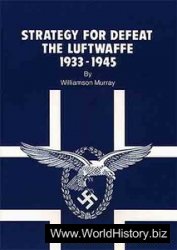Aborigine resistance in New South Wales and Tasmania - the fight to prevent the settler seizure of ancestral lands - had been growing in the course of the 1820s. Sheep stations in the Bathurst area inland from Sydney came under serious attack in 1824, while Aborigine opposition to the settler occupation of the grasslands of the Hunter Valley, further north, had become more overt, with threats of direct action against the incomers. In Tasmania the Aborigines were now engaged in open warfare, as the settlers called increasingly for their extermination.
In August 1824, to combat the Aborigine resistance, General Sir Thomas Brisbane, military governor of New South Wales, imposed martial law in the ranching country west of Mount York.1 Martial law meant that white farmers (some of whom were ‘magistrates’ in charge of administering the law) could shoot Aborigines with no questions asked. Brisbane, whose name was eventually associated with a great city, also created a death squad to be used against the Aborigines. This was a unit of mounted police, with two officers, two sergeants and twenty privates recruited from the colony’s existing force. In September 1825, the new squad was sent out against the Aborigines in the Bathurst region.
The Reverend Lancelot Threlkeld, a sharp observer of the developing conflict who lived at a mission station further north, left a description of what took place. ‘Sad was the havoc made upon the tribes at Bathurst,’ he wrote in his memoirs.
A large number were driven into a swamp, and mounted police rode round and round and shot them off indiscriminately until they were all destroyed. When one of the police enquired of the officer if a return should be made of the killed [and] wounded, there were none, all were destroyed; men, women, and children! The reply was: that there was no necessity for a return.2
Threlkeld was a congregationalist minister, appointed by the London Missionary Society, who had established a mission in 1823 on the banks of Lake Macquarie, in the Hunter Valley. He was a friend of Saxe Bannister, the colony’s attorney-general in Sydney, and wrote regular letters to him describing the new mood of resistance among the Aborigines. Saxe Bannister was a relatively liberal lawyer, firm in the belief that the colony’s laws should apply to both white and black. The two men, both new arrivals in Australia and both appalled by the frontier lawlessness and racism they encountered, soon ran into opposition from the settlers.
Threlkeld had few illusions about the whites who surrounded him. ‘No man who comes to the colony, and has ground and cattle and corn, can dispassionately view the subject of the Blacks. Their interest says “Annihilate the race”. I do expect that there will be a great destruction among them.’ He described their hostile attitude. ‘The best thing that could be done’, said William Cox, one of the richest ranchers, speaking at a public meeting, ‘would be to shoot all the Blacks and manure the ground with their carcasses, which was all the good they were fit for. . . the women and children should especially be shot as the most certain method of getting rid of the race.’3
The death squad did no paperwork after the Bathurst massacre in September 1825, but they collected up the heads of the forty-five Aborigines they had killed. The skulls were boiled down, packed up in the town, and taken back as trophies to England by the squad’s commanding officer.
The rich grasslands of the Hunter Valley, where Threlkeld had established his mission station, had been occupied by Europeans earlier in the decade, as settlers and convicts pushed out into ‘new’ territory. A huge expanse of Aborigine land had been mapped out and sold off for sheep ranches. The Aborigine peoples - the Wonnarua and the Wiradjuri - had been vocal in their protests from the start, and in July 1826 their passive resistance broke into open rebellion. Their lands were being confiscated, and now their lives too were under threat. Direct action against the settlers was called for. ‘A Black came to see me yesterday’, Threlkeld wrote to Saxe Bannister in August, ‘saying that a great many Blacks were coming from the mountains to burn all the houses of the whites.’4
Threlkeld’s letter outlined the immediate cause of their anger. Resistance had been reactivated by the presence of General Brisbane’s death squad, let loose in the valley in July. Brisbane had retired the previous December, to be replaced by the former governor of Mauritius, General Sir Ralph Darling.5 Before the death squad set out, Darling had been asked by Bannister if he planned to impose martial law, as Brisbane had done. ‘Martial law could not be necessary to put down a few savages’, was Darling’s reply.
Riding into the Hunter Valley in July, the death squad, led by Lieutenant Nathaniel Lowe, slaughtered as many Aborigines as they could find. Threlkeld gave details of its actions and of the resistance in a letter to Bannister, and the lawyer wrote to ask whether Lowe should be brought to trial for shooting the blacks. Threlkeld, who was outspoken in his writings but cautious in his actions, advised against such a move. If Lowe was removed from the area, he argued, ‘this would satisfy the Blacks and the others, [but] only exasperate the settlers more. . . We [need] every support in this vile, hypocritical country.’
He gave additional news of Aborigines taking their revenge on the settlers for helping the death squad. An Aborigine group had gone to the farm of a Mr Ogilvie and demanded that two men ‘who had aided the soldiers in shooting the Blacks’ should be delivered up to them so that they might kill them. At another hut, the Aborigines asked for food, but were refused. ‘They then threw in a volley of spears, killed two men, but a woman had the happiness to escape with her child by hiding under the bed. The settlers are all in arms. The police is out. A detachment is forwarded from Newcastle of nine soldiers, and blood will now be shed most profusely.’6
Threlkeld deplored the fact that all were now ‘in arms and many will be slain’ Writing again in September, he announced that ‘war has commenced, and still continues against the Aborigines of this land’ He also warned of a possible further development: ‘If once the prisoners join the blacks, and teach them to fire the corn and wheat, what will be the result? The people despise the Blacks, and that will be their ruin, [for] they are a formidable enemy.’
Threlkeld continued to forecast gloomily that ‘many lives will be lost on both sides’ He thought the cause of the trouble was ‘the base, wicked, malicious report. . . that “it is the Governor’s private wish to shoot all the Blacks’’’ By the end of the year, Aborigine resistance in the Hunter Valley had been largely broken - by the death squad and by the ranchers taking the law into their own hands.
Threlkeld’s friend in Sydney could be of no further assistance. Bannister had run into such trouble with successive governors that he was obliged to resign. He sailed home to London from Sydney in October, to become a lifelong critic of the treatment of the native races in the Empire.7 Threlkeld, too, was under threat. There were ‘many who would banish me from the colony’, he had told Bannister in August, ‘and prevent any attempt of a missionary nature among the Blacks - if they could.
Yet, to the surprise of the settlers, Darling agreed that the crimes of the death squad should be looked into. Bannister’s replacement, W. H. Moore, was sent to Newcastle in January 1827 to investigate. Threlkeld expected Lowe to be exonerated, since ‘all the magistrates here had previously signed a letter thanking him for his conduct in taking upon himself the responsibility of shooting his prisoner while in his safe custody. The whole of the outrages may be traced to this. . .’.
Lowe was brought to trial on two occasions, but acquitted each time and cheered loudly by his friends in court. In May he was ordered to rejoin his regiment in Tasmania, where another formidable Aborigine rebellion was under way.

Proclamation to the Aborigines of Van Diemen’s Land (Tasmania), 1829, authorised by the governor General George Arthur, but mistakenly attributed to an earlier governor in 1816, General Thomas Davey. Designed to create a narrative, one entirely at odds with the record, in which colonial law recognizes blacks and whites as equals.
The Aborigine struggle for land and survival in Tasmania had developed into a permanent armed conflict with the European settlers, and in June 1827 Aborigines speared and killed six Europeans. The settler retaliation was reported in The Times of London six months later. More than sixty Aborigines, the paper revealed, had been killed or wounded ‘recently’ by the military in Tasmania, noting in justiflcation that ‘the native people’ brought slaughter and devastation wherever they went.8 For a time the two sides were evenly balanced, but the gun of the European eventually proved more lethal than the Aborigine’s spear.
The governor of Tasmania in these years was Colonel George Arthur, a military ruler last heard of as governor of British Honduras during the slave revolt of 1820. He had arrived on the island as a prison governor, but much of his time was taken up with the Aborigine resistance. In a single month in 1828, no less than twenty inquests were held at Oatlands into killings of British settlers by Aborigines.
Taking a leaf from the policing model of New South Wales, Colonel Arthur decreed in November 1828 that the Tasmanian Aborigines should be subject to martial law. Arthur claimed he only wanted to punish the Aborigine ‘leaders’, but the settlers, given a free hand without fear of retribution, aimed more widely. In one case, at Mount Victory in 1828, thirty Aborigines were massacred by convict ‘servants’ of the Van Diemen’s Land Company, who threw the survivors over a cliffy.9 Many Aborigines were killed, and several women were axed to death. Prisoners were shot. Renewed in 1830, when Arthur came up with a yet more outlandish scheme to control the Aborigines, martial law lasted until 1832, effectively breaking Aborigine resistance in Tasmania.




 World History
World History









